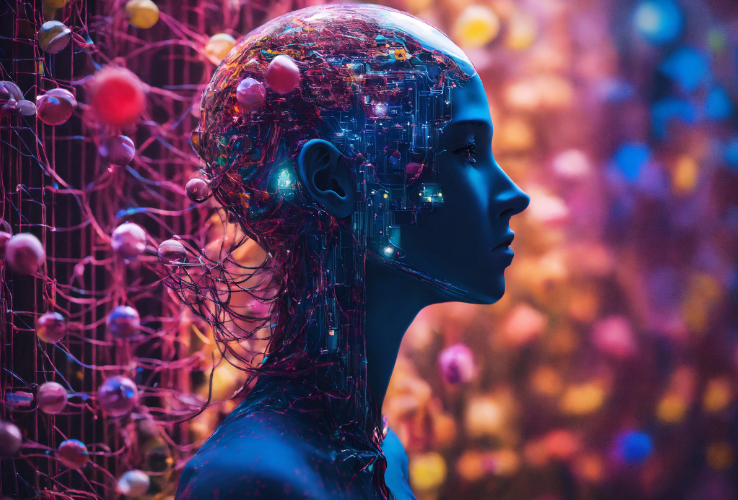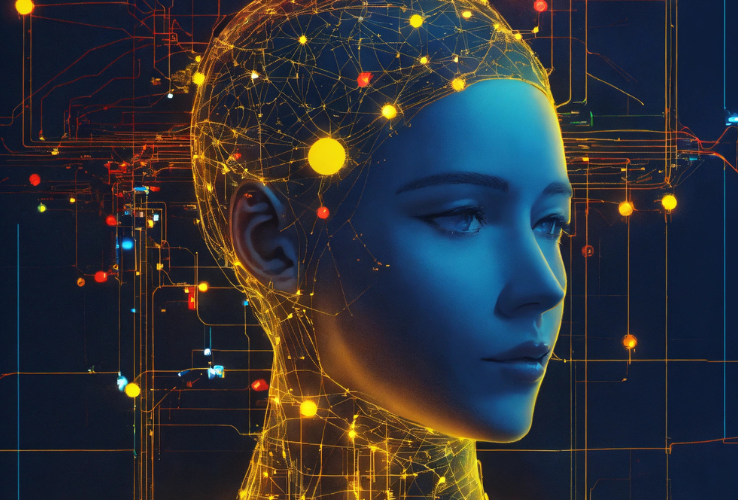Generative AI in Action: Real-World Applications and Challenges
The journey of artificial intelligence has taken a transformative turn with the advent of generative AI—a class of technology that doesn’t merely analyze or predict but creates. From generating lifelike images to crafting intricate narratives and even assisting in scientific discoveries, generative AI is no longer confined to experimental labs; it is reshaping industries and redefining possibilities. However, alongside its vast potential lies a set of challenges and ethical dilemmas that demand thoughtful navigation.
The rise of generative AI represents a pivotal shift in how machines interact with information and creativity. It’s a story of opportunity and responsibility, as industries harness this technology to innovate while grappling with its societal implications.

Generative AI: Redefining the Boundaries of Creativity
At its core, generative AI is powered by deep learning models like Generative Adversarial Networks (GANs) and transformers. These models enable machines to generate new data that mimics the patterns and structures of existing data. Unlike traditional AI, which is programmed to identify patterns or execute predefined tasks, generative AI can produce original outputs, from realistic images and videos to human-like text and complex designs.
The implications of this capability are profound. In the hands of innovative organizations, generative AI is not just augmenting creativity—it is democratizing it. Yet, its implementation across industries reveals both its immense promise and its inherent complexities.
Real-World Applications of Generative AI
1. Healthcare: Enhancing Precision and Discovery
In healthcare, generative AI is driving advancements in areas ranging from drug discovery to personalized treatment plans. By simulating molecular structures, AI models can identify potential drug candidates in a fraction of the time traditional methods require. For example, pharmaceutical companies are using generative AI to model protein structures and predict interactions, accelerating the development of life-saving therapies.
Additionally, generative AI is transforming medical imaging. Tools powered by this technology can enhance MRI scans or generate synthetic data to train diagnostic models without compromising patient privacy. This capability not only improves diagnostic accuracy but also ensures inclusivity by addressing data gaps in underrepresented populations.
2. Retail: Revolutionizing Customer Engagement
In retail, generative AI is revolutionizing customer experience by enabling hyper-personalization and creative design. Brands are using AI to generate tailored marketing content, from email campaigns to social media ads, that resonate deeply with individual consumers. Virtual try-on applications, powered by generative AI, allow customers to visualize how clothes or accessories will look on them, bridging the gap between online and in-store shopping.
Moreover, generative AI is being employed to design new product lines. By analyzing trends and consumer preferences, AI systems can propose innovative designs, enabling brands to stay ahead in competitive markets. For instance, a fashion retailer might use generative models to create unique clothing patterns that align with seasonal trends and customer feedback.
3. Media and Entertainment: Expanding Creative Horizons
The media and entertainment industry has embraced generative AI as a tool to amplify creativity. From generating realistic virtual environments for video games to creating deepfake technology for movies, AI is pushing the boundaries of visual storytelling. For instance, generative AI tools can design entire cinematic scenes or produce high-quality visual effects, reducing production time and costs.
In music, AI systems are composing original scores and assisting artists in generating new melodies. Similarly, in publishing, generative AI is being used to draft articles, create marketing copy, and even co-write novels. While these applications enhance productivity, they also raise questions about authorship and creative integrity.
Challenges and Ethical Implications
1. Bias and Representation
Generative AI systems learn from existing data, which often contains biases. When these biases are replicated or amplified in AI-generated outputs, the consequences can be significant. For example, in healthcare, biased data could lead to models that are less effective for certain demographic groups, exacerbating disparities in treatment outcomes.
Addressing these biases requires careful curation of training data, robust validation processes, and ongoing monitoring. Organizations must prioritize fairness and inclusivity in their AI development to avoid perpetuating societal inequities.
2. Misinformation and Misuse
One of the most concerning challenges of generative AI is its potential to produce convincing but false information. Deepfake technology, while innovative, has been exploited to spread misinformation, manipulate public opinion, and undermine trust in media.
Mitigating these risks requires a multi-faceted approach. Developing watermarking techniques to identify AI-generated content, establishing ethical guidelines, and fostering public awareness are critical steps toward ensuring responsible use of generative AI.
3. Intellectual Property and Ownership
The ability of generative AI to create new content raises complex questions about intellectual property (IP) rights. Who owns the rights to an AI-generated painting, design, or piece of music—the developer of the AI system, the user, or the AI itself? These questions remain unresolved, requiring collaboration between policymakers, technologists, and legal experts to establish clear frameworks.

The Future Potential of Generative AI
Despite its challenges, the future of generative AI is undeniably promising. As the technology matures, its applications are expected to expand into new domains, such as:
- Education: Generative AI can create personalized learning materials, simulate real-world scenarios, and offer tailored feedback to students.
- Sustainability: AI-generated simulations can optimize energy consumption, design eco-friendly materials, and support conservation efforts.
- Urban Planning: By generating realistic models of cityscapes, generative AI can assist planners in designing smarter, more sustainable urban environments.
These possibilities underscore the transformative power of generative AI when applied thoughtfully and ethically.
Conclusion: Embracing Innovation Responsibly
Generative AI is more than a technological advancement—it’s a catalyst for innovation across industries. From revolutionizing drug discovery to redefining customer engagement, its potential to drive progress is immense. However, realizing this potential requires a commitment to ethical principles, robust governance, and ongoing vigilance against misuse.
For organizations, the journey with generative AI begins with understanding its capabilities and limitations. By embracing its promise while addressing its challenges, businesses can harness this technology to create value, inspire creativity, and shape a more innovative and equitable future. Generative AI is not just reshaping industries; it’s reshaping how we think about creativity, collaboration, and the power of human-machine synergy.
